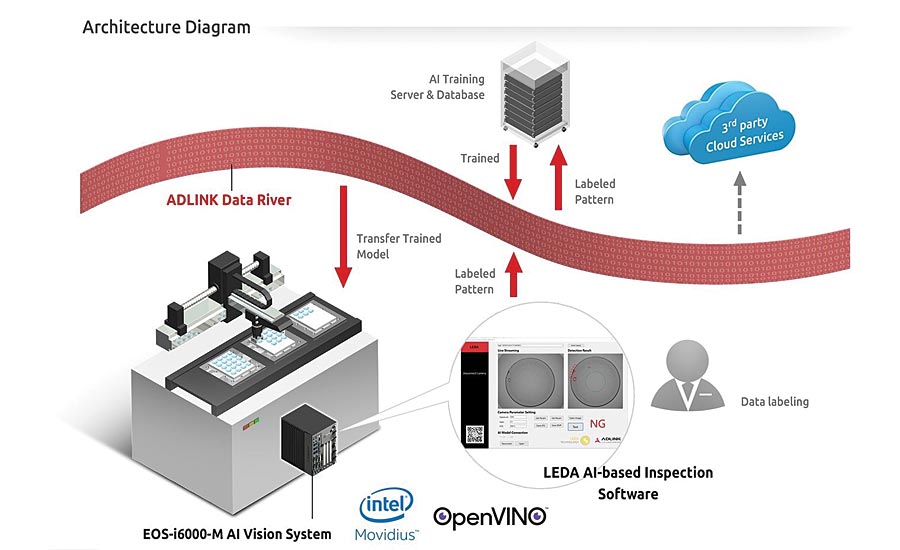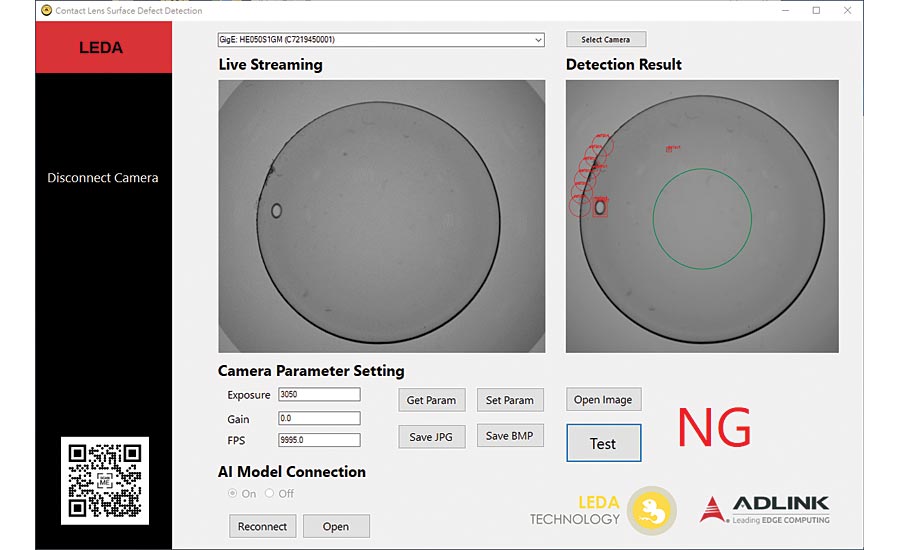How Edge AI Can Improve the Visual Inspection Process

A study by McKinsey & Company found that AI-driven quality testing can increase productivity by up to 50% and defect detection rates by up to 90% compared to human inspection. Though machines with automated optical inspection (AOI), powered by machine vision, have replaced most of the manual processes in the modern assembly line, quality control still remains a huge and costly challenge. The European Commission claims that in some industries 50% of production can be abandoned due to defects, and the defect rate can reach up to 90% in complex production environments.
The critical limitation with machine learning AOI systems is in disclosing surface defects where even a slight variant (often invisible to the human eye) can hamper the entire production run and render hundreds to thousands of products useless before the defect is discovered. The economic impact can be devastating.
Machine learning AOI systems rely on vision systems/smart cameras to autonomously scan devices to test for failures and defects. However, when it comes to high-transparency objects, such as smooth and metal surfaces, the rule-based algorithms of general machine learning-based AOI systems are hard to apply, and thus, inspection on these types of objects still relies on humans, causing lower production throughput. Machine learning AOI systems depend on fixed geometric algorithms to discover defects, but acquiring quality images from high-transparency objects often results in unacceptable inspection performance. Due to these limited capabilities, AI systems generally have to wait until a certain amount of high quality data has been accumulated from the manufacturing process floor and then send the data back to the cloud or local servers to do training. This back-and-forth process is time-consuming, arduous and expensive.
Manufacturers recognize the value in AOI machine vision solutions, but they need a faster way to accumulate data and train new algorithms to more rapidly and accurately detect defaults during production. To do this, the machine learning algorithms of AOI must work in concert with deep learning algorithms. By adding deep learning, another subset of AI to the AOI process, the defect detection process can be significantly improved.

Why Deep Learning for AOI
Deep learning is part of a broader family of machine learning methods based on artificial neural networks with representation learning. Unlike machine learning training, deep learning training can be conducted without explicit programming, requiring no human supervision. The precision of deep learning hinges not only on the algorithm but more importantly on the data and its quality. Only with a sufficient amount of high-quality data can the model training results be accurate.
With AI, machine learning and deep learning residing at the edge (or near where the compute process takes place), data can be recorded to analyze issues during the production process as the reference to adjust the manufacturing parameters to improve the yield rate and increase the overall equipment effectiveness (OEE). The very autonomous learning nature of deep learning allows one to conduct predictive analyses and reach error-free, flawless production.
The Case of Edge AI with Deep Learning for AOI
An example of the many challenges in optical defect detection is amplified in the manufacturing of contact lenses. Due to the transparent nature of contact lens material, machine vision inspection alone isn’t viable so human visual inspection is still needed. And while most manufacturers can use a sample of products, contact lens manufacturers must inspect each individual lens. This is a painstaking process, but it’s critical because contact lenses solve a basic human health issue and there’s no room for mistakes. When you consider the rapid and massive production needed to meet the increasing demand for contact lenses, human visual inspection is the production bottleneck in this industry and its unacceptable high rates of false discoveries and missed detections.
In a recent case study, an edge computing company teamed up with an AI software company that specializes in optical lenses and thermal design. Their goal was to help a contact lens manufacturer enhance its production precision. The first step was to address this issue by first introducing a machine vision system that gathered digital data to develop AI algorithms. In its early development stage, the machine learning inspection system learned from humans by having the AI system operate alongside experienced human inspectors who corrected and marked the mistakes the AI system made. The approach allowed the system to develop rules and logics of a deep learning algorithm, while accumulating adequate data for the system directly from the production line to keep improving its precision with deep training.
By combining two subsets of AI (machine learning and deep learning) and strategically applying them to optical inspection, the companies successfully helped the contact lens manufacturer increase the inspection accuracy by 65% (compared to traditional machine vision inspection) and the throughput by 50x (compared to a human inspector).

Contact lens surface defect detection
How an Edge AI-enabled Solution Works
To build a smart inspection solution, AI software can be combined with a machine vision platform, which supports a wide variety of deep learning applications. In addition, an appropriately-optimized toolkit can enable deep learning inference from edge to cloud. With this in place, automatic load balancing and asynchronous execution can deliver cost-effective performance, while heterogeneity support allows seamless execution across cloud and local servers and edge AI vision devices. This type of solution also collects data from inspection devices to train AI and iterate on inspection performance gains and maintains inspection logs for customer references.
This edge AI inspection system described above trains at the edge by continually streaming data from end devices to the server. The system learns from human inspectors first, who corrected the AI’s mistakes. Once the deep learning algorithms are established, the machine continues to train itself with exposure to additional data and continues to make improvements to the model over time. An edge AI solution, with machine learning at the helm, was able to reduce rates of false discovery and missed detection with 95% accuracy by 50%.
Conclusion
AI and AOI are supplementary. They take different, but equally critical inspection roles within AOI. By applying the subsets of AI (machine learning and deep learning) to AOI, manufacturers can precisely tune production quality and reduce quality control efforts and operational costs on exponential levels. Q
Resources:
[1] McKinsey & Company, “Smartening up with Artificial Intelligence (AI) — What’s in it for Germany and its Industrial Sector?,” April, 21 2017
[2] European Commission Horizon 2020, https://ec.europa.eu/programmes/horizon2020/en/news/intelligent-approach-zero-defect-manufacturing. March 26, 2015
[3] Medgadget, Contact Lenses Market 2020 | Industry Analysis, Research Report, Opportunities, Top Players, Share & Growth Forecast by 2026, https://www.medgadget.com/2020/06/contact-lenses-market-2020-industry-analysis-research-report-opportunities-top-players-share-growth-forecast-by-2026.html, June 10 2020
[4] ADLINK https://www.intel.com/content/www/us/en/internet-of-things/ai-in-production/success-stories.html
Looking for a reprint of this article?
From high-res PDFs to custom plaques, order your copy today!







